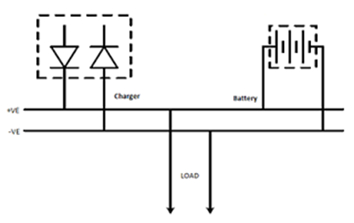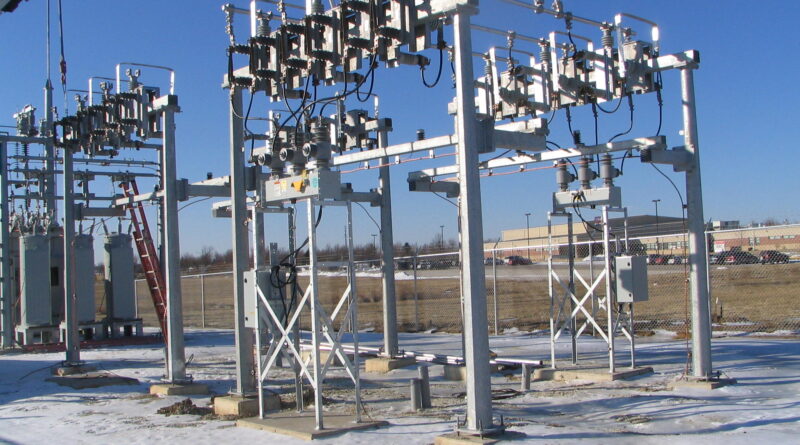
DC systems are crucial for the efficient and reliable operation of substations in the electrical power infrastructure. They enable efficient power transfer, greater stability and expanded control options. This article explores the fascinating field of substation DC systems, including their principles, components, and their essential role in enabling smooth power flow and network management. Understanding their integration into substations is critical to providing reliable energy to our homes, industries and communities.
Protective devices must be capable of correcting errors at any time. Reliability cannot be achieved without a completely reliable power supply to operate the circuit breaker trip coils and all auxiliary relays in the tripping process.

Basic functionality of the power system
An electrical grid is a complex network that allows the generation, transmission and distribution of electrical energy. It includes many components and processes that work in harmony to ensure a reliable and efficient power supply to end users. The basic functioning of an electrical network can be summarized in three main phases: generation, transmission and distribution.
Technical questions about connecting to the network
Grid connection is crucial for integrating renewable energy sources, such as solar and wind, into the existing electricity grid. Although renewable energy offers numerous benefits, there are several technical challenges associated with connecting these intermittent energy sources to the grid. Understanding and resolving these technical issues is essential for the reliable and efficient operation of the power system. Some of the main technical problems when connecting to the network are:
- Network stability
- Network stability
- Network capacity and network congestion
- Network protection and fault management
- Network codes and connection standards
Introduction to DC systems in substations
Direct current (DC) systems are essential for the efficient and reliable operation of substations. Substations are important nodes in electricity transmission and distribution networks that convert and distribute electricity to end users. Although alternating current (AC) systems are commonly used for power transmission, direct current systems are used for several specific substation applications.
Understand the role of DC systems
In substations, DC systems are an important backbone for critical functions such as control, protection and communication. These systems enable efficient power transfer, improved control capabilities, and improved stability in the substation environment. By providing reliable and accurate DC power, these systems support the smooth functioning of the entire electrical infrastructure.
DC system components
- DC Sources : The DC system in a substation typically relies on a reliable DC power source such as batteries or rectifiers. These sources convert alternating current from the grid into direct current, ensuring a constant and reliable supply for substation operations.
- DC switchgear : DC switchgear plays a crucial role in controlling and isolating the DC circuits in the substation. They include circuit breakers, circuit breakers and other protective devices designed specifically for DC applications. The DC panel ensures safe and reliable operation by enabling selective isolation and fault recovery.
- DC Distribution Panels: DC distribution panels distribute DC power to various substation equipment and systems, such as control circuits, protective relays, and communication devices. These panels provide the required voltage levels and ensure proper DC distribution to the intended components.
- Monitoring and control systems : Monitoring and control systems are essential for monitoring the performance and health of DC systems in substations. They provide real-time monitoring of voltage, current and other parameters, allowing operators to assess DC system health and take necessary actions to maintain optimal operation.
Advantages of DC systems in substations
- Better control and stability : DC systems provide better control and stability compared to AC systems in certain substation applications. The absence of reactive power and lower losses in DC transmission allow for better voltage regulation and power flow control, resulting in greater system stability.
- Efficient power transmission : DC systems enable efficient power transfer within substations and minimize voltage drops and losses. This efficiency is particularly beneficial when transmitting power over long distances or connecting distant substations.
- Compatibility with renewable energy integration : DC systems are suitable for integrating renewable energy sources in substations. Many renewable energy technologies, such as photovoltaics and wind turbines, inherently produce direct current. Direct integration of renewable energy sources into DC systems can simplify the conversion process, reduce costs and improve overall system efficiency.
Conclusion
The dynamic world of DC systems in substations plays a crucial role in ensuring the efficient and reliable operation of electrical infrastructure. Substations benefit from improved control, efficient power transmission and improved stability through the use of advanced DC power sources, switchboards, distribution panels and control systems. While challenges such as device compatibility and security issues remain, the continued advancements and integration of DC microgrids promise a future in which DC systems in substations will continue to evolve and contribute to a more sustainable and resilient electrical grid.

